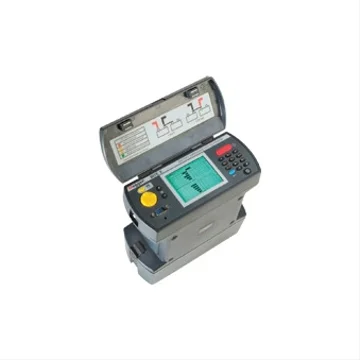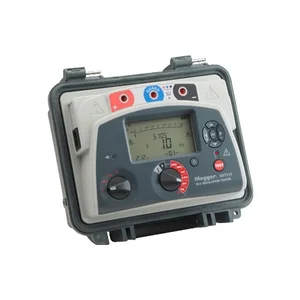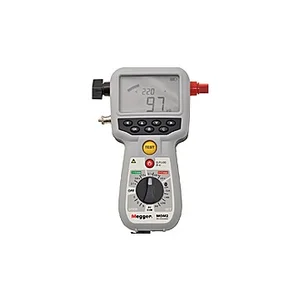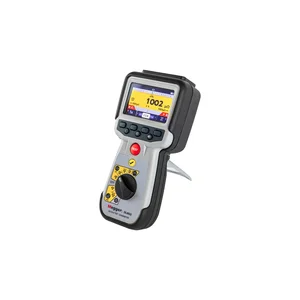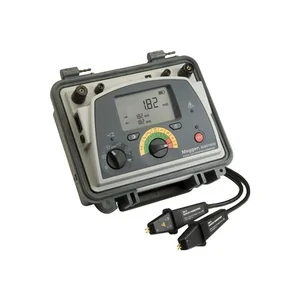Features
- Determines health of lead-acid cells up to 2000 Ah
- Measures impedance, interconnection resistance and cell voltage
- Windows CE operating system with 32 MB of memory
- PowerDB LITE Management Software
- meets IEC 61010-1
The Megger BITE3 battery impedance tester determines the health of lead-acid cells up to 2000 Ah
by taking measurements of the most important battery parameters. The BITE3 measures cell impedance, an internal
ohmic test, cell voltage, intercell connection resistance and ripple current. And, for the first time in a battery instrument,
the BITE3 measures float current and the harmonic content of the ripple current. There is even a built-in spectrum
analyzer to show the harmonic content of the ripple current. It has firmware that can be upgraded through the Internet
and supports multiple languages.
The BITE3 includes PowerDB battery management software. Power DB allows you to organize and analyze the recorded battery test data. Ideal
For NERC and FERC requirements. Power DB allows you to configure your BITE3 instrument as well as transfer the
data from the BITE3 to Power DB. Power DB will then allow you to trend voltages, impedances, strap resistances, cell
temperature as well as specific gravity. Power DB will also display the ripple current, float current, ambient temperature
as well as having a location for an IR picture or a diagram or graphics. Power DB allows you to use red, yellow and green
bands to quickly and easily compare cells versus warning and failure limits.
It is known that impedance is correlated to battery capacity and there has been a long-standing question as to when
a user should replace a cell. Recent studies by EPRI* and other organizations indicate that when the
impedance of a sealed battery increases by about 50% from its baseline value, the cell has degraded to less than about
70% capacity. BITE3 and PowerDB allow the user to trend data and to enter baseline values for comparison purposes
and to make decisions whether on-site or in the office. Both the BITE3's impedance deviation graph and the trend graph
in PowerDB clearly show the status of a cell which helps users to decide what action needs to be taken to ensure
battery back up reliability based on users' criteria.
A battery's internal impedance increases as its capacity decreases due to various factors such as age, ambient
temperature, discharge history, etc. The BITE3 measures internal impedance and dc voltage for lead-acid cells up to
2000 Ah in capacity. It also measures intercell connection resistance, float current and ripple current and the harmonic
content of the ripple current to provide a much better evaluation than any other single instrument. Impedance finds
electrical path problems due to plate sulphation, post-seal corrosion, dry-out (loss of compression), poor intracell welds
and intercell connections and more.
Applications for the Megger BITE3:
Cell replacement criteria based on impedance trends
Jumper out a cell or two
Clean and/or retighten intercell connectors
Shorten the maintenance interval, etc
Evaluate float current and ripple current effects
Electrical power generation plants
Substations — utility, railroad, industrial
Telecommunications facilities — OSP, Wireless, POPs, MTSOs, Fiber Regens
UPS systems — standard and cabinetized batteries
Railroad — Signals and Communications, CTC
Aircraft power supplies
Marine and military
The Megger BITE3 battery impedence tester ships complete with:
PowerDB software
Canvas carrying case
RS-232 null modem cable
Line chaarger
Battery
Dual-point lead set
Tip kit
